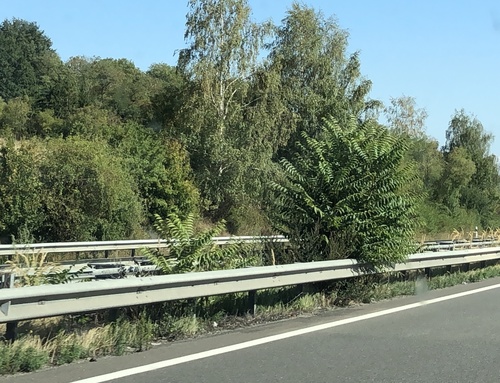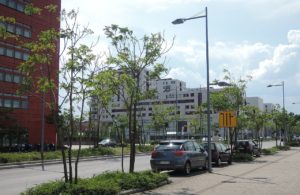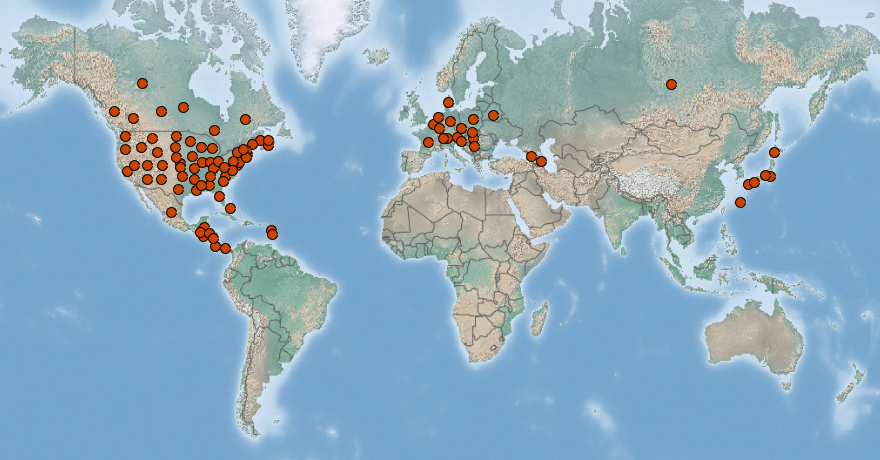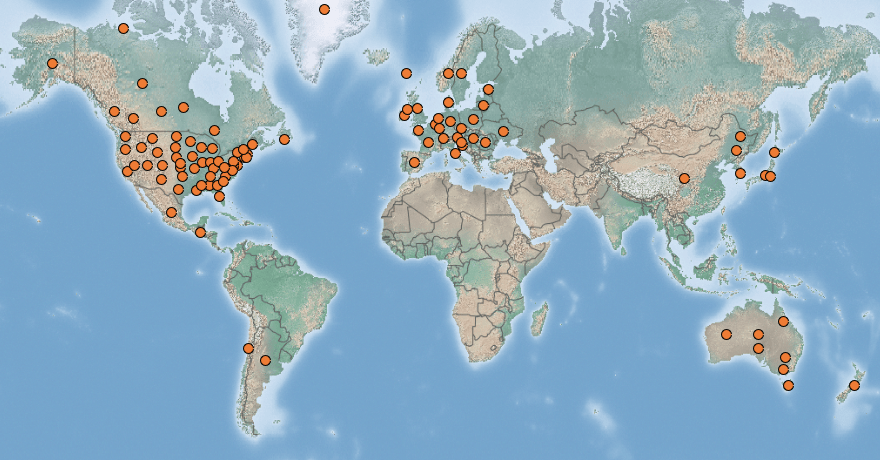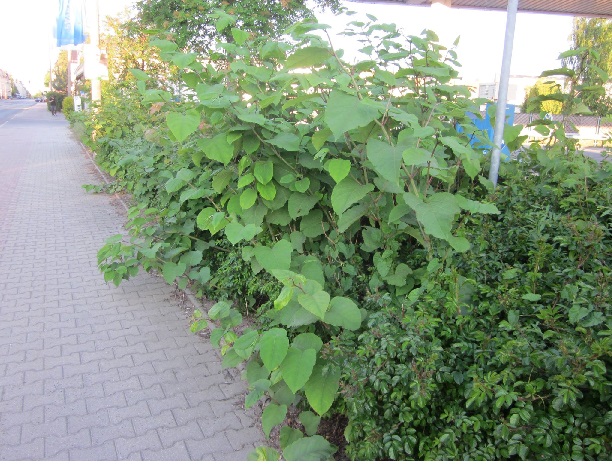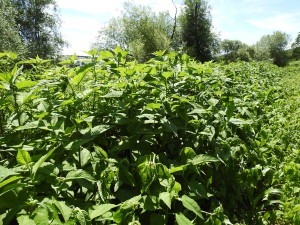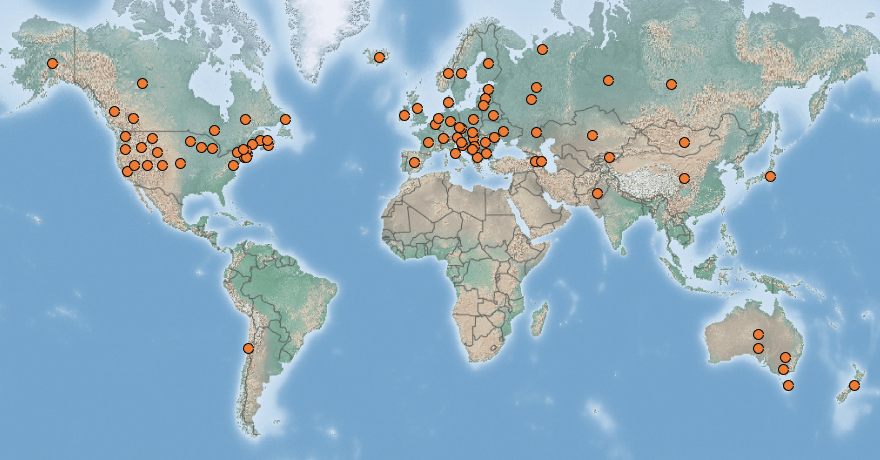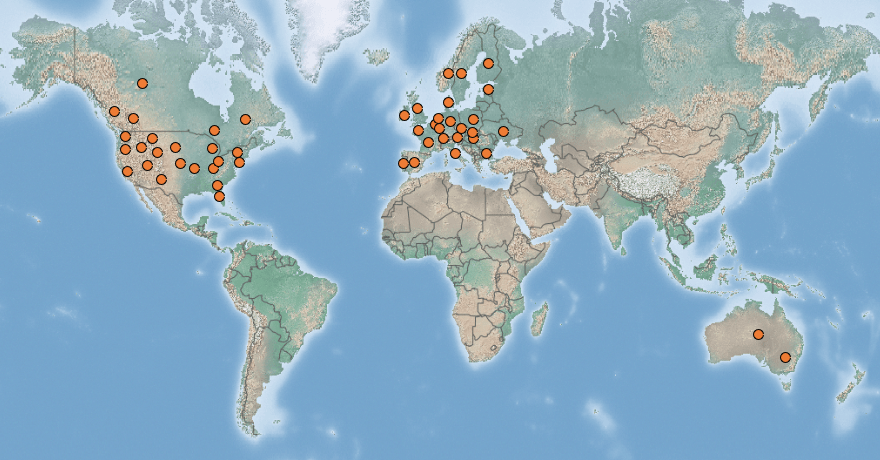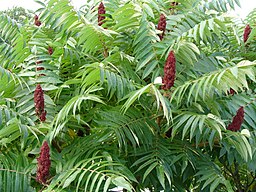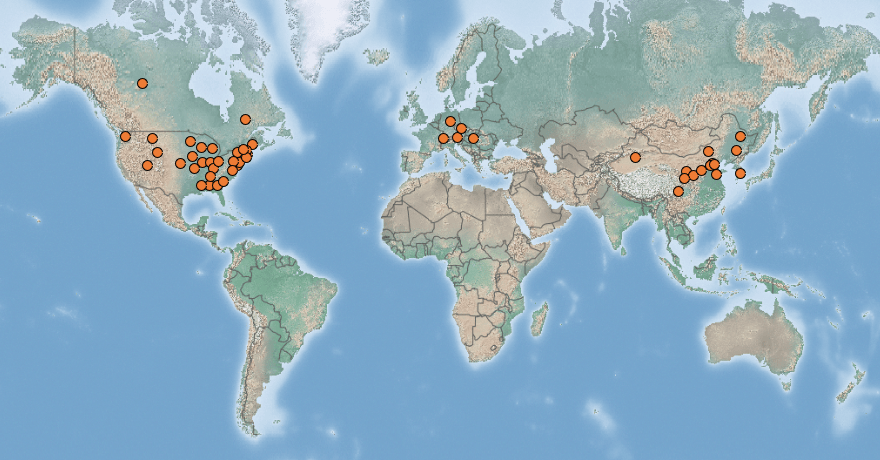 |
Egyptian goose | Status LU: established. |
 |
Nilgäns1 | Status Eur.: established. IAS of EU concern (2017). |
 |
Ouette d’Égypte | RA: ISEIA: B3, Watch List. Harmonia+: n/a. |
 |
Nilgans | Wikipedia:      | Wikispecies: | Wikispecies:  | CABI | CABI |
 |
Nijlgans | Back to the list of vertebrates |
Contents
Brief description
 Alopochen aegyptiaca (Linnaeus, 1766) is found in a diversity of wetlands, usually supplied with a belt of trees or shrubs. The species seems to be in strong expansion, Belgium is one example. During the nesting period, it develops aggressive behaviour leading to nest usurpation and decrease of offspring number in several bird species (see also Konter 2015), namely herons and raptors. Post-breeding flocks are responsible for overgrazing and for the alteration of banks and quality of water bodies (Anselin et al. 2010).
Alopochen aegyptiaca (Linnaeus, 1766) is found in a diversity of wetlands, usually supplied with a belt of trees or shrubs. The species seems to be in strong expansion, Belgium is one example. During the nesting period, it develops aggressive behaviour leading to nest usurpation and decrease of offspring number in several bird species (see also Konter 2015), namely herons and raptors. Post-breeding flocks are responsible for overgrazing and for the alteration of banks and quality of water bodies (Anselin et al. 2010).
IAS of Union concern
In 2017, the Egyptian goose was added to the list of invasive alien species of Union concern (Anonymous 2017) which implies that member states shall take all necessary steps to prevent it’s unintentional introduction or spread.
Status and distribution in Luxembourg
Records of Alopochen aegyptiaca L. in Luxembourg. Data source: Recorder-Lux, iNaturalist & GBIF, 2025-12-18.
Alopochen aegyptiaca (Linnaeus, 1766) was first documented by R. Gloden in late December 1984 on the Moselle in Bech-Kleinmacher, municipality of Schengen (MNHNL, iNaturalist & GBIF 2020). The first successful breeding attempt took place in 2007 in the nature conservation area, Haff Réimech, near Remerschen (Bastian 2016: 7). Some 20 to 30 breeding couples can now be observed every year. Outside of the breeding season, the species can be seen in large numbers on rivers or stagnant waters (Lorgé & Melchior 2015).
Today the species is widespread in the country.
An identification sheet of the species has been published by the MECDD in French and German.
Management
In an answer to a parliamentary question (Dieschbourg 2020), Environment Minister Carole Dieschbourg explained on 25 August 2020 how Luxembourg intends to tackle the birds. Instead of hunting, the eggs are to be sterilised so that the Egyptian geese can continue their breeding habits, but nothing hatches from the clutch. This is to be done by officials from the Nature and Forestry Administration, who have a lot of manpower – the eggs must be perforated or rubbed with paraffin.
Action plan
The Luxembourg management plan was published in the spring, was then open to public comment and will now be presented in autumn 2020. Hunting of the Nile geese will therefore not be allowed in Luxembourg (Adami 2020). In September 2020, Radio 100,7 reported about the management measures planed by the government (Hill 2020).
→ Finalised Action Plan for Alopochen aegyptiacus (De Sousa 2020)
The public debate on Egyptian goose in Luxembourg
Parliamentary questions
- 2020-07-14: Question écrite n°2536 [PDF]. Sujet : Propagation de l’ouette d’Égypte. Auteur : Monsieur Gusty Graas, Député. Destinataire et auteur de la réponse : Madame Carole Dieschbourg, Ministre de l’Environnement, du Climat et du Développement durable [PDF].
Risk assessment
ISEIA protocol
B3 (3+3+2+1) = Watch List (Ries et al. 2014: 199). Confirmed by new assessment on 15 May 2018 by Patrick Lorgé, Christian Ries & Manou Pfeiffenscheider.
Harmonia+ protocol
Not assessed yet.
Worldwide distribution
Fact sheet
PDF fact sheet of the Nature and Forestry Administration: FR | DE
Bibliography
- Adami, J., 2020. Invasive Wasservögel: Kampf gegen die Nilgänse. Woxx Nr. 1595: 3 (28/08/2020). Also published online.
- Anders, C., 2017. Erfassung der Bestände von Kanadagans (Branta canadensis) und Nilgans (Alopochen aegyptiaca) im Jahr 2016 im Großherzogtum Luxemburg. Regulus Wissenschaftliche Berichte 32: 12-19.
- Anonymous, 2017. Commission implementing regulation (EU) 2017/1263 of 12 July 2017 updating the list of invasive alien species of Union concern established by Implementing Regulation (EU) 2016/1141 pursuant to Regulation (EU) No 1143/2014 of the European Parliament and of the Council. Official Journal of the European Union L 182: 37-39 (13.7.2017).
- Anselin, A., E. Branquart, K. Devos, J.-Y. Paquet, D. Strubbe, D. Vangeluwe & A. Weiserbs, 2010. Harmonia database: Alopochen aegyptiaca (Linnaeus, 1766). Harmonia version 1.2, Belgian Forum on Invasive Species. URL: http://ias.biodiversity.be [accessed 2020-04-22]
- Bastian, M., 2016. Kanadagans (Branta canadensis) und Nilgans (Alopochen aegyptiaca) in Luxemburg. Bericht zur Erfassung der Kanadagans und der Nilgans im Jahr 2016 zur Untersuchung der Verbreitung, der Bestände sowie der Bestandsentwicklung im Großherzogtum Luxemburg. Centrale ornithologique Luxembourg, natur&ëmwelt a.s.b.l., Kockelscheuer. 21 p.
- Biver, G., 2013. Waterbird count – recensement hivernal des oiseaux d’eau 2009-2012. Regulus Wissenschaftliche Berichte 28: 43-58.
- CABI, 2019. Alopochen aegyptiaca (Linnaeus, 1766). In: Invasive Species Compendium. Wallingford, UK: CAB International. URL: www.cabi.org/isc [accessed 2020-04-22]
- De Sousa, Tiago, 2020. Plan d’action pour espèces exotiques envahissantes au Grand-Duché de Luxembourg: l’Ouette d’Égypte, Alopochen aegyptiacus (Linnaeus, 1766). Version 2020-09-04. Administration de la nature et des forêts, Luxembourg. 23 pp.
- Dieschbourg, C., 2020. Réponse de la Ministre de l’Environnement, du Climat et du Développement durable à question n°2536 de Monsieur Gusty Graas concernant la propagation de l’ouette d’Égypte. [chd.lu]
- Graas, G., 2020. Question n°2536 de Monsieur Gusty Graas concernant la propagation de l’ouette d’Égypte. [chd.lu]
- Hill, C., 2020. D’lëtzebuergesch Äntwert op den internationalen Nilgäns-Problem. Radio 100,7: 2020-09-22 – 07:20. URL: https://www.100komma7.lu/program/episode/316652/202009220720-202009220725
- Konter, A., 2015. Die weitere Entwicklung der Wasservogelwelt an der Sauer unterhalb von Steinheim in den Jahren 2012-2014. Regulus Wissenschaftliche Berichte 30: 1-34.
- Konter, A., 2021. Zum Brutgeschäft der Nilgänse Alopochen aegyptiaca in Luxemburg. Regulus Wissenschaftliche Berichte 36: 43-58.
- Konter, A. & P. Lorgé, 2009. Vorkommen und Brut von Kanada- Branta canadensis (Linné 1758) und Nilgans Alopochen aegyptiacus (Linné 1766) in Luxemburg. Regulus wissenschaftliche Berichte 24: 49–54.
- Lorgé, P. & E. Melchior, 2015. Vögel Luxemburgs, natur&emwelt, ISBN: 978-2-919920-01-3, 9. Ausgabe, 273 pp.
- MNHNL, iNaturalist & GBIF, 2020. Alopochen aegyptiaca (Linnaeus, 1766) in MNHNL-mdata, online portal combining species observation from Recorder-Lux, iNaturalist and GBIF. National Museum of Natural History, Luxembourg. URL: https://mdata.mnhn.lu [accessed 2020-04-22]
- Ries, C., M. Pfeiffenschneider, Engel, E., J.-C. Heidt & M. Lauff, 2014. Environmental impact assessment and black, watch and alert list classification after the ISEIA Protocol of vertebrates in Luxembourg. Bull. Soc. Nat. luxemb. 115: 195-201. [PDF 247 KB]
- Weiss, J., 2015. Liste der Luxemburger Vogelnamen. Regulus Wissenschaftliche Berichte 29 (2014): 69-79. [PDF 1.1 MB]
Page content last updated on 2023-08-17. Last proofread by Caroline Grounds on 2019-11-27.
- Cf. Weiss 2015: 73.[↩]













